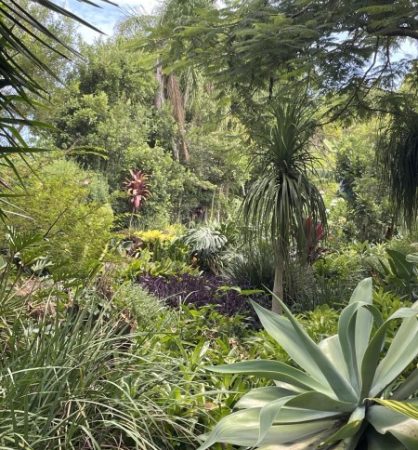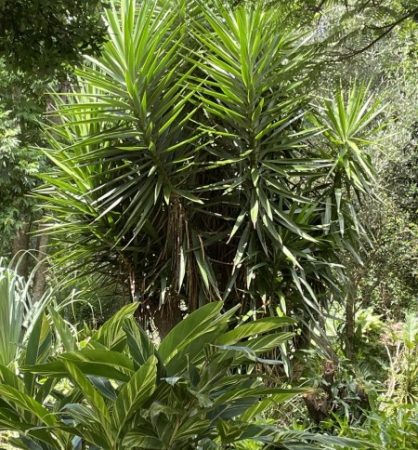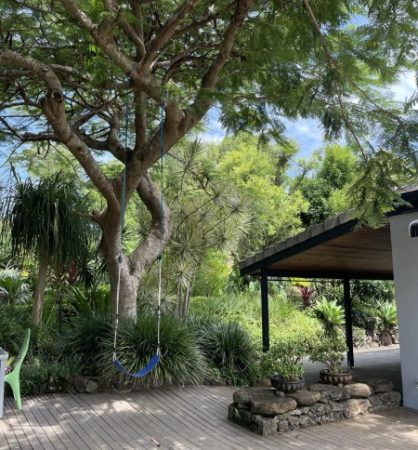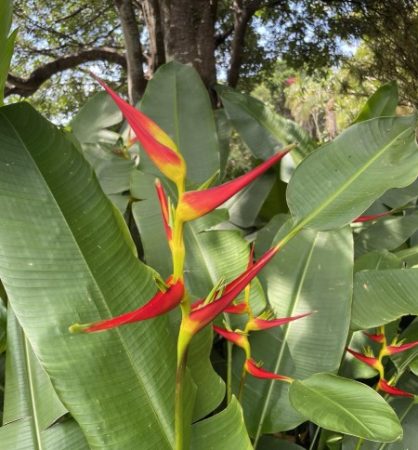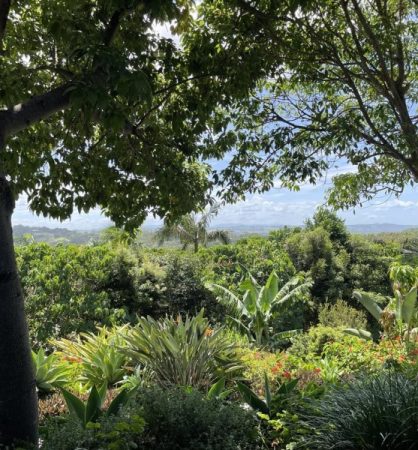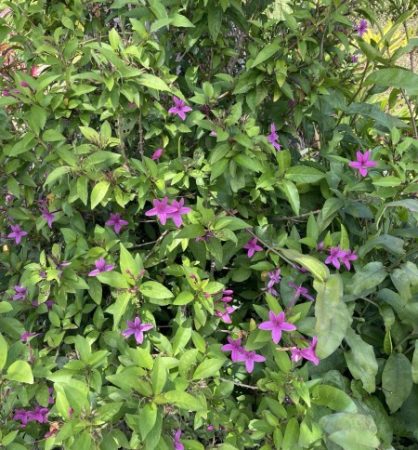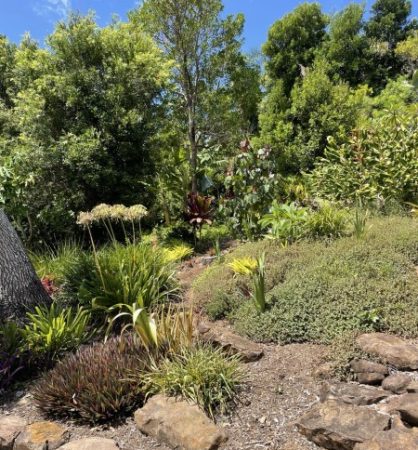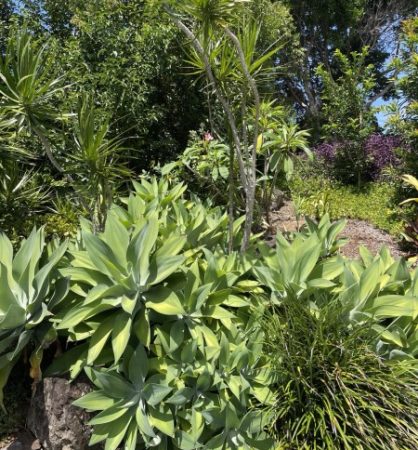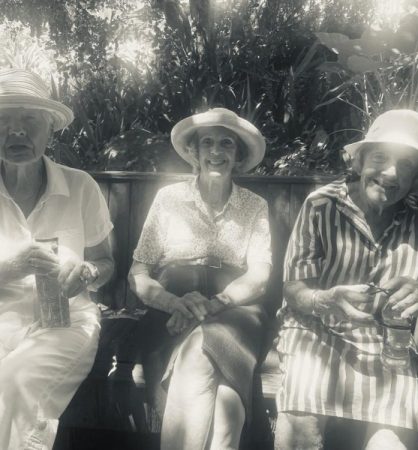Our February garden visit was to the gorgeous Head Lennox garden of Gayle and Rick Hultgren.
Their 2 acre garden is a real surprise in the middle of Lennox with a variety of trees and shrubs part
tropical and part sculptured. The property is rather steep and has been terraced with winding tarred pathways that are wide enough to accommodate a Golf Buggy! There is a lovely landscaped pool terrace incorporating shaded seating areas and lovely plantings. It has ocean views over the tropical paradise that is the garden.


